Auctions
Discover the Hidden Gems of the ‘Bowie/Collector’ Sale at Sotheby’s London
Bowie's trove of affordable Memphis designs is exhilarating—and tempting.
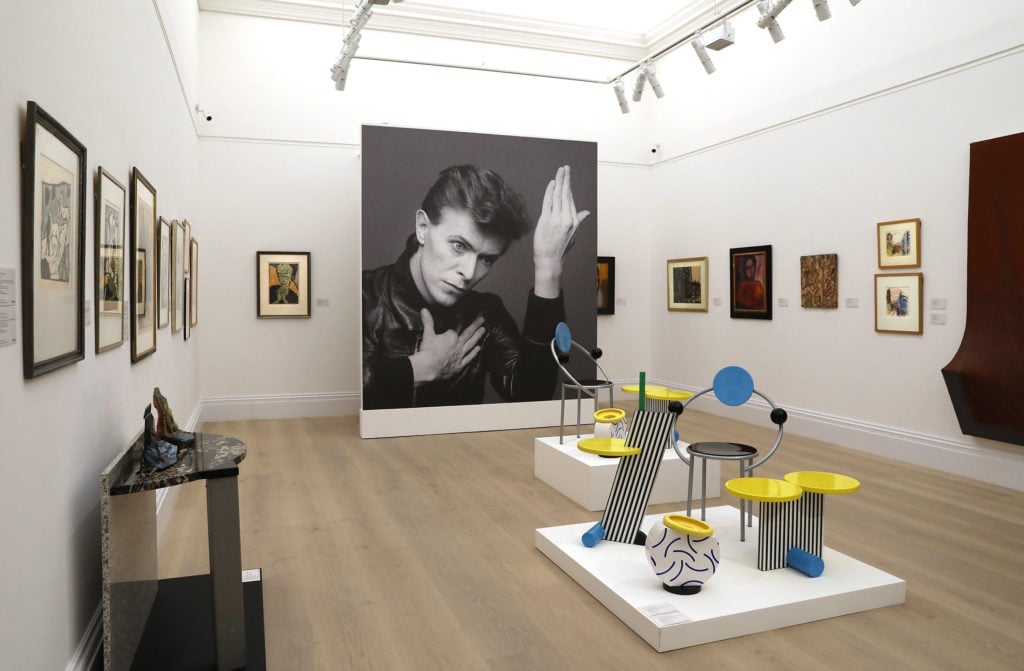
Bowie's trove of affordable Memphis designs is exhilarating—and tempting.

Lorena Muñoz-Alonso

This past Tuesday, the exhibition “Bowie/Collector” opened to the public at Sotheby’s London ahead of the three-part sale of David Bowie’s personal art and design collection on November 10-11.
With preview exhibitions already staged in Los Angeles, New York, Hong Kong, and even London during the summer, many approached this final leg of the show with a certain sense of déjà vu. But nothing—not even those recent teasers—could prepare art lovers, would-be bidders, and Bowie fans for the electrifying, full-blown spectacle of seeing the bulk of his 400-item collection, comprising modern and contemporary British art, African art, and Memphis designs, so carefully put together and sountracked to his seminal 1977 album Low.
Much has been said of Bowie’s art collection and of his enduring love of art, of which he’s been oft-quoted as saying: “Art was, seriously, the only thing I’d ever wanted to own … It can change the way I feel in the mornings.”
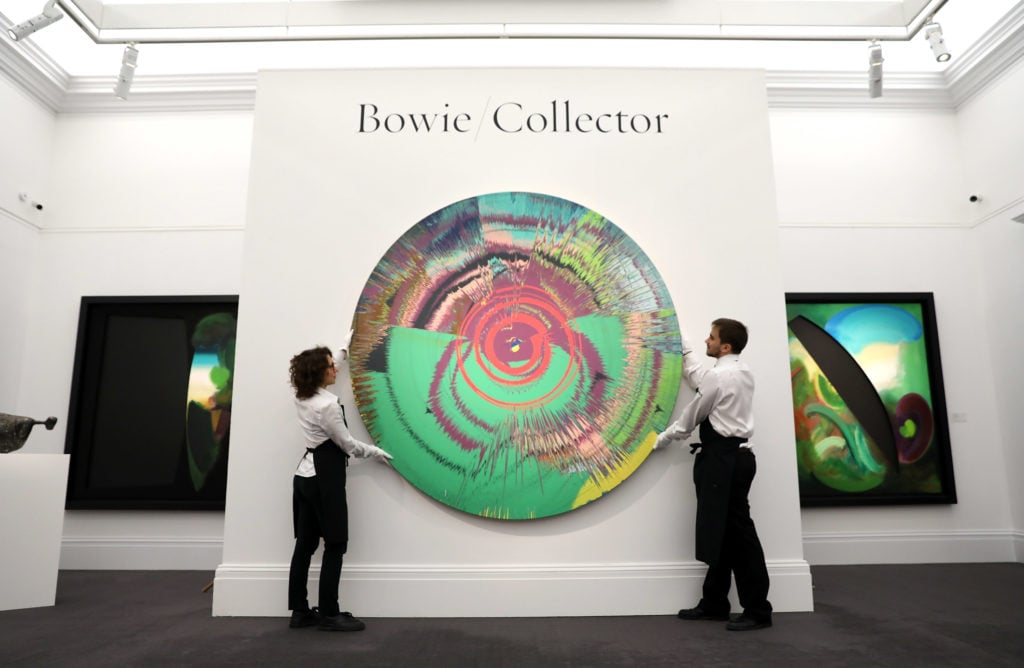
Damien Hirst and David Bowie, Beautiful, hallo, space-boy painting (1995). Estimate £250,000-£350,000. Photo Tim Whitby/Getty Images for Sotherby’s ©Sotheby’s.
And, indeed, seeing the best part of his collection impeccably hung and lit at the Bond Street branch of the auctioneers, it’s easy to feel his passion. There’s a consistency to it, underpinned by a sense of curiosity and enthusiasm, evident in everything, from obvious choices—like the much-feted pair of 1984 canvases by Jean-Michel Basquiat, or the spin painting he created in collaboration with Damien Hirst in 1995—to more adventurous ones, like his committed interest in outsider and contemporary African art for example.
What has been revealed for the very first time, though, is the extent of Bowie’s engagement with the Memphis group, a collective of radical designers based in Milan and led by the architect and designer Ettore Sottsass, who revolutionized the world of industrial design from 1981 to 1987.
Bowie became a thorough collector of Memphis, and the 100-plus pieces now exhibited and available for sale at Sotheby’s are, undoubtedly, the true hidden gem of his much-covered collection.
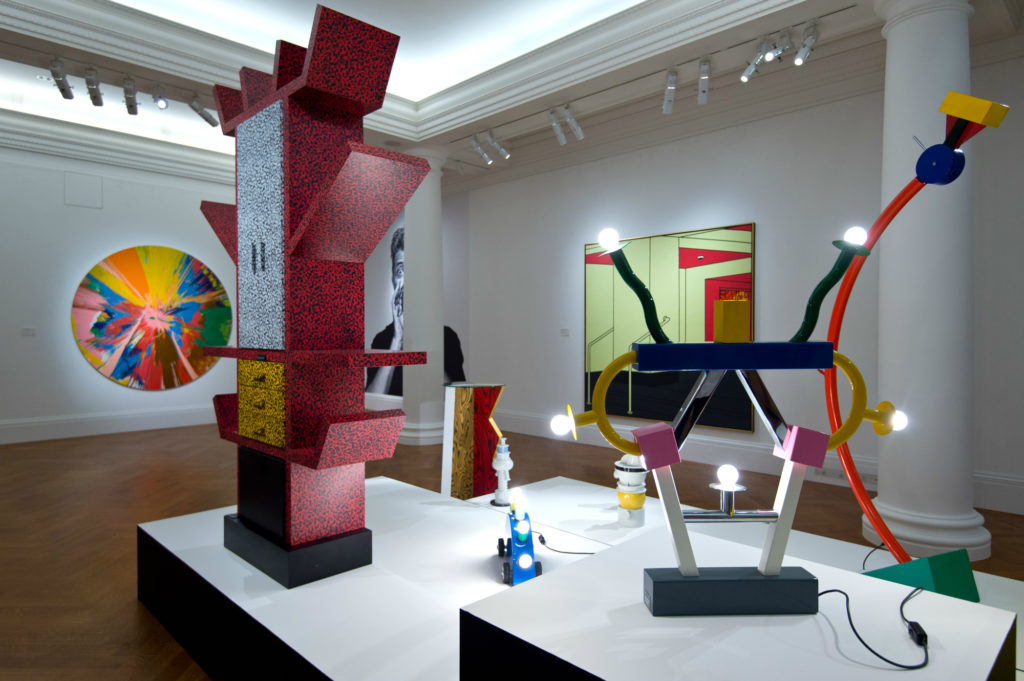
Installation view of works by Memphis at the exhibition “Bowie/Collector” at Sotheby’s London. Photo ©Sotheby’s.
The designs of Memphis—from bookcases to sofas and coffee sets—are pure 1980s Po-Mo delight, playful to the point of irreverence, colorful, and conflating all sort of historical influences, running the gamut from Mesopotamia and Art Deco to 1950s Americana.
The items designed by Sottsass—who was well into his 60s by 1981—and his squad of young designers (including Andrea Branzi, Michele de Lucchi, Nathalie du Pasquier, Matteo Thun, and George Sowden) were highly popular during the collective’s lifespan, but fell out of favor shortly after, dismissed as just another example of the “bad taste” that reigned during the decade.
Recommended: artnet Asks: Memphis Group Co-Founder Nathalie Du Pasquier
Bowie started collecting Memphis items in the 1990s, though, after falling in love with Sottsass’s Valentine typewriter for Olivetti which, although designed in 1969, is credited with being a precursor of the movement.
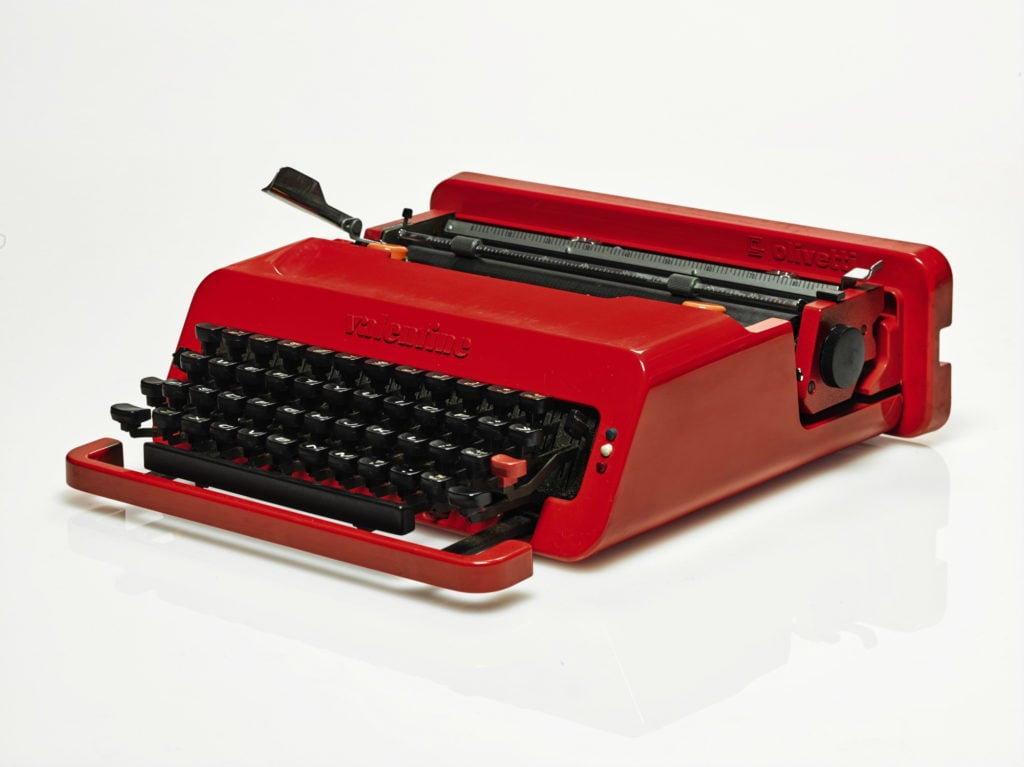
Ettore Sottsass and Perry King, Valentine portable typewriter (designed in 1969). Photo ©Sotheby’s.
“It is quite admirable and brave to see someone collect post-modern Italian design with such gusto. The fact that [Bowie] bought it after the group disbanded is even more revealing to the fact that he truly collected what he loved, and was not influenced by what was in vogue at the time,” Laetitia Contat-Desfontaines and Adam Trunoske, design specialists at Sotheby’s, told artnet News.
At the auction, Bowie’s own Valentine will be for sale, with a presale estimate of £300-£500 (used ones typically fetch between £200 and £300 at online marketplaces like eBay). The presale estimates of all of Bowie’s Memphis pieces tend to reflect market prices but, who knows what will happen during the auction, considering the items’ unique provenance.
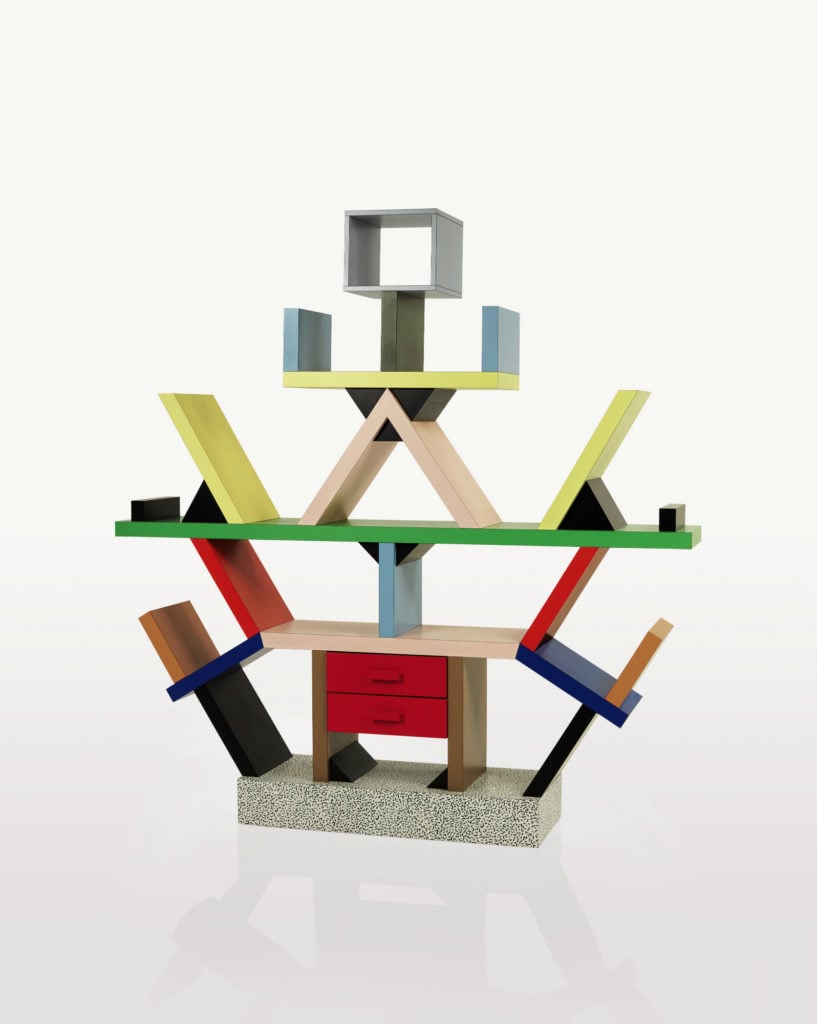
Ettore Sottsass, Carlton room divider (designed 1981). Estimate £5,000-£7,000. Photo ©Sotheby’s.
“The estimates given on any work is always what its fair market value happens to be at that given time, no matter the provenance. It is true that great provenance can impact the hammer price of a given work, but this is left to the bidders to decide how much the provenance is worth to them on the day,” Contat-Desfontaines and Trunoske told artnet News.
Bowie is hardly the only celebrity to have been seduced by the transgressive and humorous pleasures afforded by Memphis. Karl Lagerfeld was an enthused collector of works by the collective while they were actively producing pieces.
Photos of his Monaco penthouse taken in 1983 show him sitting an apartment decorated entirely in Memphis style, from shelves, tables, chairs, and lamps, down to the bed, dressing room, and TV set. A Memphis total look.
Contrary to Bowie though, and in true fashionista style, Lagerfeld collected the pieces while they were en vogue, and got rid of them—via a sale at Sotheby’s too, as it happens—as soon as they weren’t anymore, in 1991.

Ettore Sottsass, Ashoka lamp (designed in 1981). Estimate £800-£1,200. Photo ©Sotheby’s.
Since then, however, Memphis has made a slow but true comeback, capturing the imagination a new generation of industrial designers, as well as graphic and fashion designers, artists, and even filmmakers, seduced by its combination of a unique aesthetic and intellectual weight.
“There is something that will never be repeated, and even less in a industrial production, and it is the fact that Memphis was a project about ideas. Revolutionary ideas based on contradictions, like mixing poor materials (laminated plastic) with rich materials (wood). I always thought that using two different languages produces a new life,” Sottsass told me during an interview in his Milan house in 2006, only a year before his death at 90.

Installation shot during the preview of the exhibition “Bowie/Collector” at Sotheby’s London. Photo Tim Whitby/Getty Images for Sotherby’s ©Sotheby’s.
It was this conceptual aspect, this “new life,” which also enchanted the ever-curious, ever-evolving Bowie. Now, this unique private collection, assembled over two decades, is available for the public to view and to purchase. But who will dare to bid next Friday?
“As Memphis was a truly international collective, with designers from Japan, Italy, France, Austria (Sottsass himself was originally born in Innsbruck), the UK and the US; and with estimates as low as £60-80, we believe these pieces will inspire individuals from all backgrounds, whether they are serious collectors or fans of David Bowie discovering Memphis design for the first time,” the design experts at Sotheby’s told artnet News.
The “Bowie/Collector Design: Ettore Sottsass and the Memphis Group” sale will take place on November 11, 4pm, at Sotheby’s London.